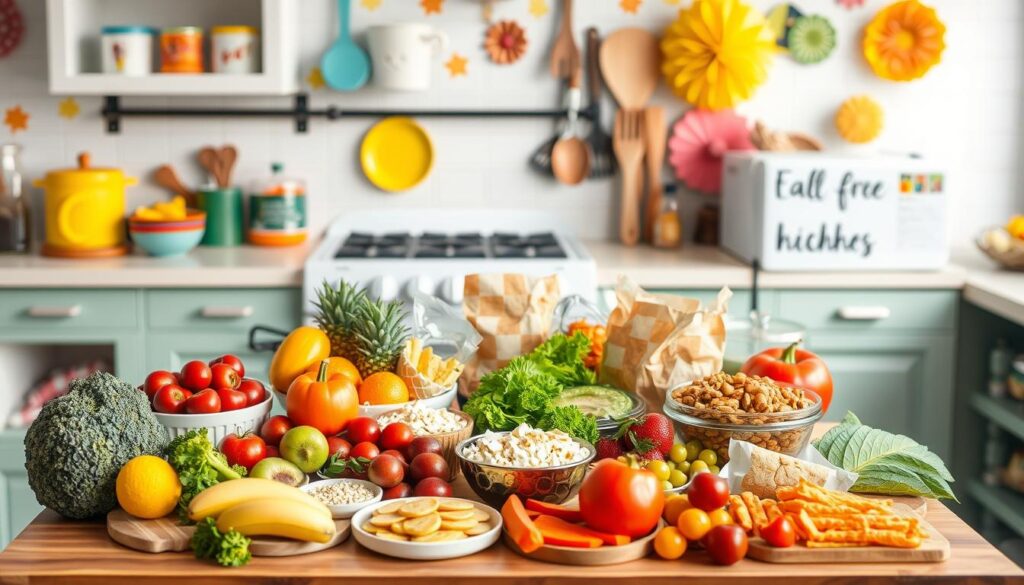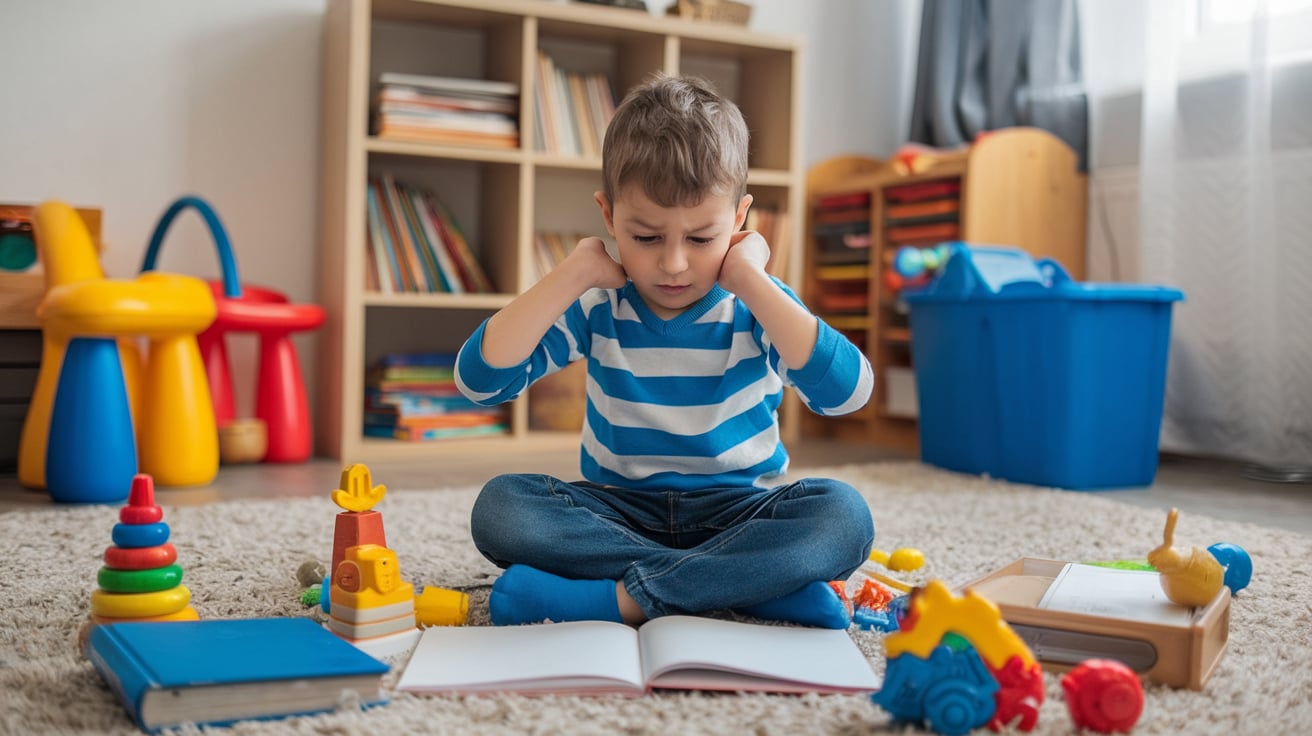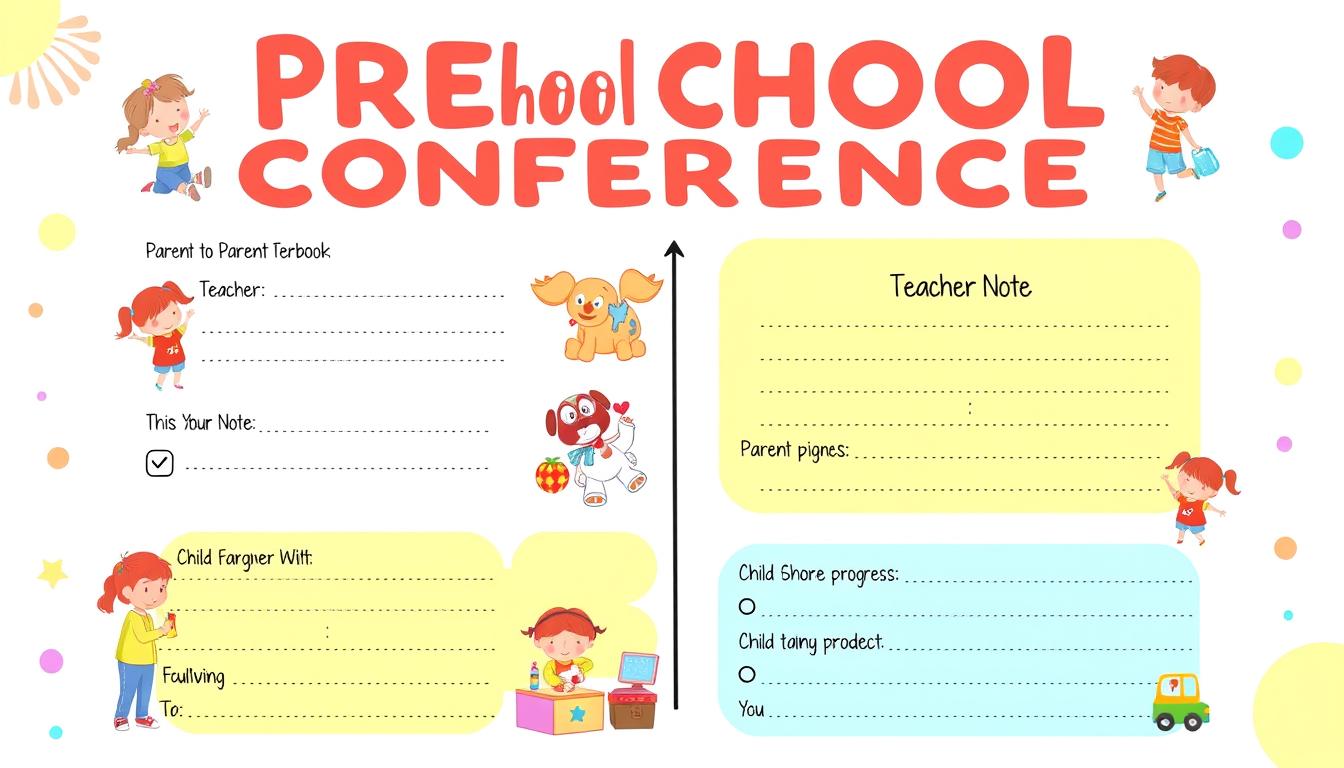Keeping your child safe with food allergies can be tough. But, with the right knowledge, you can manage their condition well. This guide will help you understand food allergens, create a safety plan, and teach your child to take care of themselves.

Managing Food Allergies for Kids: A Parent’s Guide
Key Takeaways
- Understand the most prevalent food allergies affecting Australian children
- Learn to recognise the signs and symptoms of allergic reactions
- Develop an emergency action plan to ensure prompt response to allergic episodes
- Discover strategies for safe food preparation and cross-contamination prevention
- Equip your child with age-appropriate knowledge and self-advocacy skills
Understanding Common Food Allergens in Children
It’s important to know the common food allergens in kids. In Australia, peanuts, tree nuts, milk, eggs, and seafood are often the culprits. These can cause anything from mild rashes to serious reactions.
Most Prevalent Food Allergies in Australian Kids
Studies show that Australian kids often have allergies to:
- Peanuts
- Tree nuts (like almonds, cashews, and walnuts)
- Cow’s milk
- Eggs
- Seafood (including fish and shellfish)
Signs and Symptoms to Watch For
Symptoms of a food allergy can be different. They can range from mild skin issues to severe reactions. Look out for:
- Hives, rashes, or eczema
- Swelling of the face, lips, tongue, or throat
- Difficulty breathing, wheezing, or coughing
- Nausea, vomiting, or abdominal pain
- Dizziness or fainting
Cross-Reactivity Between Different Foods
Some foods can trigger reactions in people allergic to others. For example, a peanut allergy might also mean avoiding tree nuts. Seafood allergy means staying away from all fish and shellfish.
| Allergen | Cross-Reactive Foods |
|---|---|
| Peanuts | Tree nuts (almonds, cashews, walnuts, etc.) |
| Tree nuts | Peanuts, other tree nuts |
| Seafood | Fish, shellfish |
Knowing about these common allergens and their cross-reactivity is key for parents. It helps in managing their child’s food allergies.
Managing Food Allergies for Kids: Essential First Steps
Dealing with food allergies can be tough for parents. But, starting with the right steps can really help. The first thing is to get a proper diagnosis from a qualified allergist. This helps you know exactly what your child is allergic to and how serious it is.
After getting a diagnosis, learning to use epinephrine auto-injectors like EpiPens® is key. These devices can save lives by quickly treating severe allergic reactions. It’s important to know the signs of anaphylaxis, like hives and trouble breathing, so you can act fast.
It’s also vital to educate yourself and your child about food allergies. Learn about common allergens like peanuts and eggs. Knowing this helps you make safe choices when eating out or at social events.
| Common Food Allergens | Potential Cross-Reactivity |
|---|---|
| Peanuts | Tree nuts |
| Tree nuts (e.g., almonds, cashews, walnuts) | Peanuts |
| Eggs | Poultry |
| Dairy | Beef, goat, and sheep’s milk |
By following these first steps, you’ll be well-prepared to manage your child’s food allergies. This ensures their safety and helps them feel confident about their condition.
Creating an Allergy Action Plan
Making a detailed allergy action plan is key for managing food allergies for kids. It acts as a guide, helping to quickly and effectively handle anaphylaxis situations. Let’s look at the important parts to include.
Emergency Contact Information
Start by listing emergency contacts. This includes the child’s doctor, local emergency services, and trusted family or friends. Make sure this info is easy to find and clearly shown in the plan.
Step-by-Step Response Protocol
The plan should have a clear, step-by-step guide for allergic reactions. It should cover recognizing signs, using epinephrine auto-injectors, and getting medical help right away.
Medication Instructions and Storage
Include how to use and store epinephrine auto-injectors or other meds. It’s vital to store them properly and make them easy to get to for anaphylaxis prevention.
With a thorough allergy action plan, parents can act fast and with confidence. This reduces the chance of serious reactions and keeps their child safe in different situations.
Reading and Understanding Food Labels
As parents of children with food allergies, it’s vital to understand food labels. Knowing the language and rules around allergen labelling in Australia helps you make safe choices. This protects your child’s health.
When checking food labels, look for clear signs of common allergens like peanuts, tree nuts, dairy, eggs, wheat, soy, and seafood. These are often in bold at the ingredient list’s end. Also, watch for warnings like “may contain” or “manufactured in a facility that also processes.” These hints suggest possible cross-contamination risks.
- Familiarise yourself with the Australian Food Standards Code and its requirements for allergen labelling.
- Learn the different names and forms that common allergens may appear under, such as “casein” for dairy or “lecithin” for soy.
- Pay close attention to the ingredient list, as even small amounts of an allergen can trigger a reaction.
“Thoroughly reading and understanding food labels is the first line of defence in managing food allergies for kids.”
By carefully reading food labels, you can safely shop for your child. This ensures they get allergy-friendly meals and snacks. Always ask manufacturers if you’re unsure about a product’s ingredients.
Safe Food Preparation and Cross-Contamination Prevention
Keeping children with food allergies safe starts in the kitchen. It’s important to prepare and store food properly. This helps prevent cross-contamination and makes mealtime safer for them.
Kitchen Safety Measures
Clean your kitchen well, including surfaces, utensils, and equipment. Use separate cutting boards, knives, and tools for safe foods. Always wash your hands before and during cooking.
Proper Food Storage Guidelines
- Keep allergen-free ingredients in sealed, labeled containers to avoid mix-ups.
- Use separate shelves or areas in the fridge and pantry for safe foods.
- Don’t store items like opened bags of nuts near safe foods.
Cooking Tools and Equipment Separation
Use specific tools and equipment for safe meals. This means separate cutting boards, utensils, and cooking pots. Clean and sanitize shared items before using them.
By following these steps, you can make a safe cooking space for your child. Kitchen safety and preventing cross-contamination are key to managing food allergies and keeping your child healthy.
Navigating School and Childcare Settings
Keeping children with food allergies safe in schools and childcare is very important. As a parent, you are key in working with these places to make safe plans. These plans help keep your child away from harmful foods.
Begin by meeting with school leaders, teachers, and nurses. Together, make a detailed Allergy Action Plan. This plan should list your child’s allergies, what to watch for, and how to act in emergencies. It’s important that everyone who looks after your child knows about it.
- Teach school staff how to spot anaphylaxis and use epinephrine auto-injectors.
- Push for rules that help keep food allergies safe, like no certain foods, washing hands often, and cleaning well.
- Help the school talk to other parents about food rules and build a welcoming atmosphere.
With childcare, make sure they know about your child’s allergies and can handle emergencies. Give them the training and medicine they need to keep your child safe.
| School Policies | Childcare Policies |
|---|---|
| Allergy-aware classroom policies Designated allergy-free zones Comprehensive emergency protocols | Allergen-free food preparation Strict cleaning and sanitization procedures Staff training on allergy management |
Working with schools and childcare helps make a safe place for your child. With good planning and talking, you can make sure your child is happy and safe.
Teaching Kids About Their Food Allergies
Teaching kids about their food allergies is key to their health and confidence. Parents can help by using education that fits their child’s age. This builds their ability to handle their allergies on their own.
Age-Appropriate Education Strategies
Teaching about food allergies should match the child’s age. Young kids learn best through hands-on activities. They can learn to recognize foods and understand symptoms.
As kids get older, they can learn more about allergies. They’ll learn about food labels and how to respond in emergencies.
Self-Advocacy Skills Development
- Teach kids to talk about their allergies and what they need.
- Help them read food labels and choose safe foods.
- Practice saying no to food and explaining their allergy to friends.
Building Confidence in Social Situations
It’s tough for kids to deal with food allergies in social situations. Encourage them to be proud of managing their condition. Teach them to share their allergy with friends.
This helps them feel confident and make friends. It also makes them feel included.
Teaching kids to manage their food allergies is vital. It helps them live a healthy, happy life. By teaching them at the right time and empowering them, parents help them succeed with their allergy.
Allergy-Friendly Meal Planning and Recipes
Managing food allergies for kids can be tough. But, you can make tasty, healthy meals for everyone. Focus on using safe, nutritious ingredients for your meals.
Allergy-Friendly Recipes for the Whole Family
We’ve got some easy, safe recipes for common allergies like dairy, nuts, and gluten. These dishes are tasty and safe for kids with allergies. They’re also loved by the whole family.
- Creamy Dairy-Free Tomato Soup
- Gluten-Free Chicken Nuggets
- Nut-Free Granola Bars
- Allergy-Friendly Chocolate Chip Cookies
| Recipe | Allergens Excluded | Nutritional Benefits |
|---|---|---|
| Creamy Dairy-Free Tomato Soup | Dairy, Gluten | High in Vitamin C, Antioxidants |
| Gluten-Free Chicken Nuggets | Gluten, Soy | Excellent Source of Protein, Low in Fat |
| Nut-Free Granola Bars | Nuts, Dairy | High in Fibre, Contains Whole Grains |
| Allergy-Friendly Chocolate Chip Cookies | Dairy, Nuts, Eggs | Satisfies Sweet Cravings, Portion-Controlled |
Adding these safe recipes to your meal plan helps kids with allergies enjoy tasty, healthy meals. You won’t have to worry about their safety.
“Preparing allergy-friendly meals doesn’t have to be complicated. With a little creativity and the right ingredients, you can create dishes that everyone in the family will love.”
For successful allergy-friendly meal planning, use safe, nutritious ingredients. Be aware of food allergies and adjust your recipes. This way, your kids can have a varied, safe, and healthy diet.
Social Situations and Special Occasions
Dealing with food allergies can be tough at social events and special times. But, with smart planning, kids with allergies can have fun and stay safe. Whether it’s birthday parties, playdates, eating out, or holidays, parents need to be ready to manage their kids’ allergy risks.
Birthday Parties and Playdates
At birthday parties or playdates, talk to the host about your child’s food allergies first. You can bring safe snacks or a special treat. Make sure to check food labels and avoid mixing foods to prevent allergic reactions.
Restaurant Dining Tips
Eating out can be hard for families with food-allergic kids. Look up the menu and call the restaurant before you go. Tell the server and chef about your child’s allergies. Always carry emergency medicine, like epinephrine auto-injectors.
Holiday Celebrations
Holidays mean lots of food, which can be risky for kids with allergies. Talk to the host about your child’s allergies and bring safe dishes. Teach your child to check labels and avoid unknown foods. Make sure they know how to get emergency help if needed.
By planning ahead, talking openly, and teaching others, families can make sure their kids with food allergies can join in safely and confidently.
| Event | Allergy Management Tips |
|---|---|
| Birthday Parties | Communicate with the host about your child’s allergies Offer to provide allergy-friendly snacks or a special treat Encourage the host to read food labels carefully |
| Restaurant Dining | Research the menu and call ahead to discuss dietary requirements Speak directly to the server and chef about the allergies Carry emergency medication, such as epinephrine auto-injectors |
| Holiday Celebrations | Communicate with hosts about your child’s allergies Offer to bring allergy-friendly dishes to share Remind your child to be vigilant about reading labels |
“With the right strategies, children with allergies can participate safely and enjoy these occasions.”
Emergency Preparedness and Treatment Options
Managing food allergies in kids means being ready for emergencies. Knowing the signs of a severe allergic reaction, or anaphylaxis, is key. This ensures quick and right treatment.
Anaphylaxis is a serious condition that needs fast medical help. Signs include trouble breathing, swelling, and a sudden drop in blood pressure. If your child shows these signs after an allergen, use an epinephrine auto-injector right away and call for help.
Epinephrine auto-injectors, like EpiPen, are the main treatment for anaphylaxis. They give a set dose of epinephrine to help stop severe allergic reactions. It’s vital to have an auto-injector ready and know how to use it for allergies in kids.
| Anaphylaxis Prevention Tips | Treatment Options |
|---|---|
| Avoid known food allergens Read food labels carefully Carry epinephrine auto-injectors at all times Educate caregivers on emergency response | Administer epinephrine auto-injector Call emergency services (000) Monitor for additional symptoms Seek immediate medical attention |
New research is looking into better treatments for food allergies in kids, including ways to prevent anaphylaxis and find cures. While these new options are hopeful, it’s crucial to work with your child’s doctor. This will help make a detailed plan for managing their allergies and being ready for emergencies.
“The best way to manage food allergies in children is to be proactive, educate yourself and your family, and always have an emergency plan in place.”
TO WATCH VIDEO CLICK HERE
Conclusion
Managing food allergies for your child is a big task, but you’re not alone. With careful attention, learning, and support from allergy groups, you can keep your child safe. Stay up-to-date with new research and treatments.
Teach your child about their allergies and how to speak up for themselves. This builds their confidence and independence. Work with schools and friends to make sure they’re in a safe place.
You are your child’s biggest supporter. Listen to your gut and always look for help when you need it. With teamwork, we can make sure food allergies don’t hold your child back.
TO SEE MORE TOPICS CLICK HERE
FAQ
What are the most common food allergens affecting Australian kids?
In Australia, kids often have allergies to peanuts, tree nuts, milk, eggs, and seafood. These can cause mild to severe reactions, including anaphylaxis.
How can I recognise the signs and symptoms of a food allergy in my child?
Watch for rashes, hives, swelling, and breathing problems. Also, look out for stomach issues. Severe reactions like anaphylaxis are a big concern.
What are the essential first steps I should take after my child is diagnosed with a food allergy?
First, get a proper diagnosis and understand the allergy’s severity. Learn how to use epinephrine auto-injectors. Early action and education are key.
How do I create a comprehensive allergy action plan for my child?
Your plan should list emergency contacts and a step-by-step response. Include instructions on medication use and storage. A detailed plan ensures a quick, right response to an allergic reaction.
What should I look for when reading food labels to identify potential allergens?
Look for common allergen terms and any warning statements on labels. This helps spot allergens, even in small amounts.
How can I prevent cross-contamination and ensure safe food preparation at home?
Use dedicated tools and equipment for cooking. Store food safely and clean thoroughly to avoid cross-contamination. These steps help make meals safe for your child.
What should I discuss with my child’s school or childcare provider to ensure a safe environment?
Work with schools to create a detailed management plan. Educate staff and ensure policies protect your child without isolating them.
How can I empower my child to manage their own food allergies?
Teach them about their allergies and how to advocate for themselves. Building confidence in social situations is important for their well-being.
Where can I find allergy-friendly meal ideas and recipes?
This guide offers tips for nutritious meals without allergens. It also includes recipes that everyone can enjoy.
How can I manage my child’s food allergies in social situations and during special occasions?
We share strategies for safe participation in parties, playdates, and holidays. This way, your child can enjoy these events without risk.
What should I know about emergency preparedness and treatment options for food allergies?
Recognise severe reaction signs and know how to use auto-injectors. Understand when to seek medical help. We also discuss future allergy treatments.



